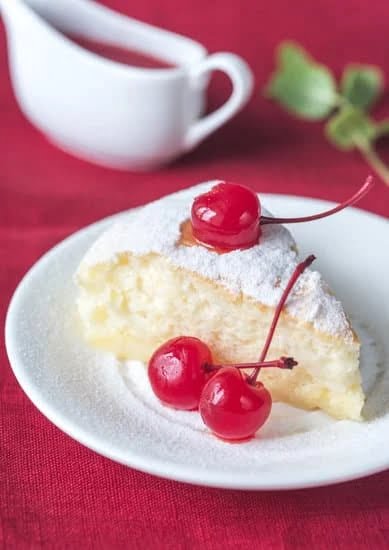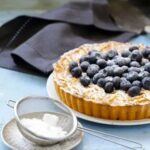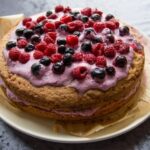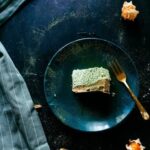Decorating cakes has become an art form in its own right, with people continuously pushing the boundaries of creativity and imagination. One particularly popular cake design that has captured the attention of party planners and dessert enthusiasts alike is the sleeping dragon cake.
This unique creation adds an element of fantasy and whimsy to any event, making it a go-to choice for themed parties and special occasions. In this article, we will delve into the world of decorating a sleeping dragon cake, providing step-by-step instructions on how to bring this majestic creature to life.
Imagine a cake that not only satisfies your taste buds but also serves as a stunning centerpiece for your next gathering. A sleeping dragon cake oozes with visual appeal and awe-inspiring details that are bound to leave your guests speechless. From the intricately carved body to the expertly sculpted facial features, every element of this cake exudes craftsmanship and dedication.
Creating a sleeping dragon cake is an opportunity to let your creativity soar. With endless possibilities for customization, you can tailor this design to suit any occasion or theme. Whether it’s a children’s birthday party or a game night with friends, the versatility of a sleeping dragon cake makes it a standout choice for events both big and small.
So get ready to embark on an exciting adventure into the realm of cake decorating. With our comprehensive guide, you’ll learn everything from preparing the perfect base to sculpting intricate details and adding those final touches that bring your sleeping dragon cake to life. Get ready to impress your guests and create memories that will last long after the final slice has been enjoyed. Let’s dive in.
Preparing the Base
Preparing the Base:
To create a visually stunning sleeping dragon cake, it is crucial to start with a well-baked and cooled cake. The choice of cake flavor and shape also plays an important role in achieving the desired design. Here are some tips to help you choose the right cake for your sleeping dragon creation:
- Cake Flavor: Consider flavors that complement the theme of a dragon, such as chocolate, red velvet, or even a spiced carrot cake. These rich and indulgent flavors will add depth to your creation and make it truly memorable.
- Cake Shape: When choosing a cake shape, think about the position you want the dragon to be in while it sleeps. A rectangular or oval-shaped cake will help depict a stretched-out dragon, while a round or square shape can lend itself well to a curled-up sleeping dragon.
Once you have decided on the flavor and shape of your cake, it is essential to level and crumb coat it before moving on to the decorating phase. Leveling ensures that your cake has an even surface, making it easier to carve later on. Crumb coating involves applying a thin layer of buttercream or ganache to seal in any loose crumbs and provide a smooth base for your final decorations.
| Cake Flavor | Cake Shape |
|---|---|
| Chocolate | Oval-shaped |
| Red Velvet | Round-shaped |
| Spiced Carrot | Square-shaped |
Remember, starting with a good base sets the foundation for a successful sleeping dragon cake. Take the time to choose the right cake flavor and shape, and ensure that your cake is leveled and crumb coated before diving into the decorating process.
Sculpting the Sleeping Dragon
Choosing the Right Cake for Your Sleeping Dragon
Before you can start sculpting your sleeping dragon cake, it’s important to choose the right cake flavor and shape. The flavor of the cake will greatly impact the overall taste of your creation, so consider what flavors will pair well with your chosen theme or occasion. Chocolate or vanilla are classic choices that always go over well with a variety of guests, but feel free to get creative and experiment with unique flavors like red velvet or lemon.
In addition to flavor, consider the shape of the cake. While a traditional round cake can work for a sleeping dragon design, you may want to consider using multiple layers to create a more three-dimensional effect. Square or rectangular cakes can also be used as building blocks for different parts of the dragon’s body.
Carving and Shaping the Dragon
Once you have your baked and cooled cake, it’s time to start sculpting. Begin by leveling the top of each layer if needed, ensuring a flat surface on which to work. Next, stack your layers with a thin layer of frosting between each one to create stability.
To shape the body of the sleeping dragon, use a serrated knife to carefully cut off any excess cake from each side of the stacked layers. Gradually carve out curves and contours until you achieve the desired silhouette for your dragon. Remember to save any scraps for later use in creating additional details.
For beginners or those looking for additional guidance, using cake templates or stencils can be incredibly helpful. These tools provide an outline that you can follow while carving your dragon shape, ensuring accuracy and making it easier to bring your vision to life.
Adding Limbs and Tail
Now that you have carved out the basic body shape, it’s time to add limbs and a tail. Form balls of excess cake material into smaller spheres for arms and legs, attaching them to the main body using dowels or toothpicks for added stability.
Shape these smaller spheres into limbs by carving and sculpting them to resemble arms and legs. For the tail, roll a long tube of cake and attach it to the back of the body, tapering it towards the end for a realistic look.
Remember to use extra frosting or ganache between each piece as you assemble your dragon’s limbs and tail. This will not only help them stick together but also provide additional support.
By following these step-by-step instructions and utilizing cake templates or stencils, you can easily sculpt your sleeping dragon cake into a visually stunning masterpiece that is sure to impress at your next themed party or special occasion.
Creating the Dragon’s Scales
Once you have shaped the body of your sleeping dragon cake, it’s time to add the iconic scales that will bring your creation to life. There are several different techniques you can use to achieve a scaly texture that will make your dragon look fierce and majestic.
One option is to use fondant cutouts. Roll out your colored fondant into a thin sheet, and then use small round or oval cookie cutters to create individual scale shapes. Gently press these onto the cake, starting at the bottom and working your way up in rows. This method allows for precision and gives a neat and uniform appearance to the scales.
Another technique is piping buttercream scales directly onto the cake’s surface using a piping bag fitted with a small round tip. Start by outlining each scale shape with buttercream icing and then fill it in with additional piped lines. Vary the size and direction of the scales to create a more organic look.
For those looking for a quicker option, consider using edible sugar sheets. These pre-made sheets feature textured patterns that resemble scales when applied to the cake’s surface. Simply cut them into desired shapes and attach them using a small amount of water or edible glue.
When choosing colors for your dragon’s scales, keep in mind that dragons are often depicted with rich hues like deep greens, fiery reds, or dark purples. Experiment with different shades within those color families to add depth and dimensionality to your cake. Layering various shades together can also help achieve a more realistic effect.
Remember that practice makes perfect when it comes to creating scale textures, so don’t be afraid to try out different techniques until you find the one that works best for you. The scales are an essential part of capturing the essence of a sleeping dragon, so take your time and enjoy the process of bringing this mythical creature to life on your cake.
Bringing the Dragon to Life
Once you have shaped the cake into a sleeping dragon silhouette, it’s time to bring your creation to life by adding facial features. These features will give your dragon cake its character and personality. Mold fondant or modeling chocolate to create eyes, snout, teeth, and ears that will make your dragon come alive.
To create the eyes, start by rolling a piece of colored fondant or modeling chocolate into a ball. Use your thumb or a small spoon to create an indentation in the center of each eye. This will give them a more realistic appearance. Next, use food coloring or edible markers to add details such as pupils and irises.
For the snout, roll out a long strip of fondant or modeling chocolate and shape it into a curve. Attach it just below where the eyes will be placed on the cake. Use your fingers or sculpting tools to add creases and texture for a more lifelike look.
To create teeth, roll out small pieces of white fondant or modeling chocolate and shape them into triangular shapes. Attach these teeth along the edge of the snout where you want them to appear on the cake.
Lastly, mold fondant or modeling chocolate into small ears and attach them on either side of the dragon’s head. Experiment with different expressions by adjusting the angle and position of the eyes, snout, teeth, and ears. You can also play with different colors schemes for a unique twist of whimsy.
Remember that this is your chance to unleash your creativity. Don’t be afraid to experiment with different expressions and color combinations that suit your vision for the dragon cake. Let your imagination run wild as you bring this magical creature to life.
By following these steps for adding facial features, you’ll be able to give your sleeping dragon cake its own personality that will captivate everyone at your themed party or special occasion.
Decorating the Dragon’s Bed
Decorating the Dragon’s Bed:
When it comes to decorating a sleeping dragon cake, one crucial aspect is creating a visually appealing bed for the dragon. This section will provide ideas and techniques for incorporating a sleeping theme into the cake’s presentation, ensuring that every detail contributes to the overall design.
1. Edible Decorations:
To make the sleeping dragon cake truly captivating, consider using edible decorations such as fondant pillows, blankets, or even a miniature bed. These elements can be crafted out of fondant or modeling chocolate and placed strategically around the cake to mimic a comfy bed. You can create different shapes and sizes for the pillows, experimenting with colors and patterns to match your desired aesthetic.
2. Textures and Patterns:
Adding textures like quilted patterns or lace details to the bed can enhance the overall visual appeal of the cake. Quilting can be achieved by using a quilting tool or by creating imprints with a fork on rolled fondant or buttercream. Alternatively, you can use lace molds or piping techniques with buttercream or royal icing to create delicate lace details on fondant sheets.
3. Theme-related Elements:
Consider incorporating elements related to sleep into your dragon’s bed decoration. Miniature nightstands with edible books and lamps, tiny slippers made from sugar paste, or even a little alarm clock made from fondant can bring life to the concept of sleep and relaxation.
4. Colors and Accents:
Choose colors based on your theme; softer tones like pastels usually work well for a sleeping scene. Add accents such as edible pearls, sugar flowers, or hand-painted designs on the bedcovers to make them stand out while maintaining an elegant look.
Remember that creativity is essential in this step; feel free to adapt these suggestions according to your preferences and party theme. Having fun with different ideas will allow you to personalize your sleeping dragon cake even further while creating an eye-catching display that will impress your guests.
Adding Final Touches
When it comes to decorating a sleeping dragon cake, the small details can make all the difference in creating an exceptional and eye-catching design. The final touches are what bring the dragon to life and add that extra touch of magic. In this section, we will discuss the significance of these small details and provide guidance on how to embellish your dragon cake with edible accessories.
One way to make your dragon cake truly exceptional is by adding wings, claws, or spikes. These elements not only contribute to the overall appearance of the dragon but also give it a more realistic and dynamic feel. To create wings, you can shape fondant or modeling chocolate into wing-like structures and attach them to the body using toothpicks or edible glue.
For claws, you can mold fondant or use edible candy shapes in a claw-like form. Spikes can be achieved by shaping fondant into pointy cones and strategically placing them along the back or tail of the dragon.
To enhance the overall design and make your dragon stand out even more, consider using food coloring or edible dust. Food coloring can be used to add depth and dimension to different parts of the cake, such as shading around the eyes or color variations on scales.
Edible dust can be brushed over certain areas of the cake to create a shimmering effect or highlight specific features. Experiment with different colors and techniques to achieve the desired look for your unique sleeping dragon creation.
Remember, as you add these final touches, it’s important to keep in mind that less is sometimes more. Avoid overcrowding your cake with too many accessories or overdoing it with food coloring. Strive for balance and harmony in your design, allowing each element to enhance rather than overpower one another.
By paying attention to these small but significant details, you can take your sleeping dragon cake from ordinary to extraordinary. These finishing touches will truly make your creation stand out at any themed party or special occasion. So, let your imagination roam free and have fun exploring different ways to make your dragon cake exceptional through the use of wings, claws, spikes, food coloring, and edible dust.
Displaying and Serving the Sleeping Dragon Cake
Displaying and serving the Sleeping Dragon Cake is an important aspect of creating a visually stunning centerpiece for your themed party or special occasion. There are several ways to present the cake that will enhance its overall appeal and make it stand out on the dessert table.
One option is to use a cake stand specifically designed for tiered cakes. A multi-tiered cake stand will not only provide stability for the Sleeping Dragon Cake but also allow guests to easily see and appreciate all the intricate details of the cake design. Opt for a stand that complements the theme of your party, such as one with dragon or fantasy-inspired motifs.
If you want to create a more immersive experience, consider creating a themed display table for your Sleeping Dragon Cake. Surround the cake with elements that evoke the dragon’s lair or its natural habitat. You can use props like fake rocks, moss, or branches to create a mystical atmosphere. Add dragon-themed decorations such as miniature figurines, treasure chests, or dragon eggs to complete the look.
When it comes to serving the Sleeping Dragon Cake, it’s important to ensure that guests can easily enjoy their slices without affecting the integrity of the cake’s design. One option is to pre-cut individual slices and serve them on small plates alongside matching napkins. Alternatively, you can provide a designated area where guests can help themselves to slices using cake servers or utensils.
| Displaying | Serving |
|---|---|
| Use a tiered cake stand | Pre-cut individual slices |
| Create a themed display table | Provide designated serving area |
Remember to keep any extra refrigerated until ready to serve and take into consideration any dietary restrictions or allergies of your guests. By presenting and serving the Sleeping Dragon Cake in an appealing and practical manner, you will not only impress your guests but also make the entire experience more memorable and enjoyable.
Data:
Displaying:
- Use a tiered cake stand.
- Create a themed display table.
Serving:
- Pre-cut individual slices.
- Provide designated serving area.
Conclusion
In conclusion, decorating a sleeping dragon cake is a thrilling and imaginative endeavor that can transform any special occasion into a truly memorable event. Throughout this blog post, we have delved into the key steps and techniques to create a visually stunning masterpiece. From preparing the base to sculpting the dragon’s silhouette, creating the scales, bringing the dragon to life with facial features, decorating the dragon’s bed, adding final touches, and finally serving the cake with flair.
It is important to remember that while this guide provides detailed instructions, it also encourages readers to embrace their own unique creativity and give their own twist to their dragon cake. Every dragon has its own personality waiting to be brought to life through colors, expressions, and delicate details. So go ahead and let your imagination soar as you decorate your sleeping dragon cake.
We would love for our readers to share their own dragon cake creations in the comments section below. This will foster a sense of community and inspiration as fellow decorators can exchange ideas and experiences. Perhaps you have an innovative technique or creative concept that could inspire others in their dragon cake endeavors. Let us come together as a community of baking enthusiasts and celebrate our shared love for exquisite edible art.
So whether you’re planning a themed party or simply want to challenge yourself with an extraordinary baking project, decorating a sleeping dragon cake is an enchanting experience that promises stunning results. Embrace your creativity, follow these guidelines along with your personal touch, and watch as your creation becomes the centerpiece of your celebration – capturing imaginations and leaving lasting memories for all who encounter its magic.
Frequently Asked Questions
How to make a toothless cake topper?
To make a toothless cake topper, you can follow a few simple steps. Start by shaping a piece of fondant or gum paste into a small oval shape for the head of the topper. Use small pieces of fondant or gum paste to create the facial features like eyes, nose, and eyebrows, ensuring they resemble a toothless character.
Next, you can mold teeth using white fondant or gum paste and carefully attach them to the mouth area on the head using edible glue or water. Allow the topper to dry and harden before gently placing it on top of your cake. Adding small details like hair or accessories is optional but can enhance the overall look of your toothless cake topper.
How to decorate a cake with whipped cream?
Decorating a cake with whipped cream can result in a light and fluffy finish that tastes delicious. Start by preparing your favorite whipped cream recipe, whether it’s homemade or store-bought. Once you have your whipped cream prepared, ensure that your cake is completely cooled before beginning the decorating process.
Spread an even layer of whipped cream over the entire surface of the cake using an offset spatula or icing smoother, making sure it is smooth and level. To add some visual interest, you can use piping bags fitted with different tips to create decorative borders or rosettes around the edges or top of your cake. Lastly, keep in mind that whipped cream is best enjoyed fresh and should be stored in the refrigerator until ready to serve.
What can I use instead of frosting?
If you’re looking for alternatives to traditional frosting for your cake, there are several options that can provide equally tasty results. One alternative is ganache, which is a mixture of melted chocolate and heavy cream. It has a glossy appearance and decadent taste that complements many types of cakes beautifully.
Another option is using fruit preserves as a filling between layers instead of frosting on top – this works particularly well with sponge cakes where you want to highlight their light texture. Additionally, cream cheese frosting is a popular choice for carrot or red velvet cakes as it adds a tangy and creamy element. Finally, for a lighter option, you could use a dusting of powdered sugar or cocoa powder over the cake instead of using traditional frosting.

Welcome to our cake decorating blog! My name is Destiny Flores, and I am the proud owner of a cake decorating business named Cake Karma. Our mission is to provide delicious, beautiful cakes for all occasions. We specialize in creating custom cakes that are tailored specifically to each customer’s individual needs and tastes.





